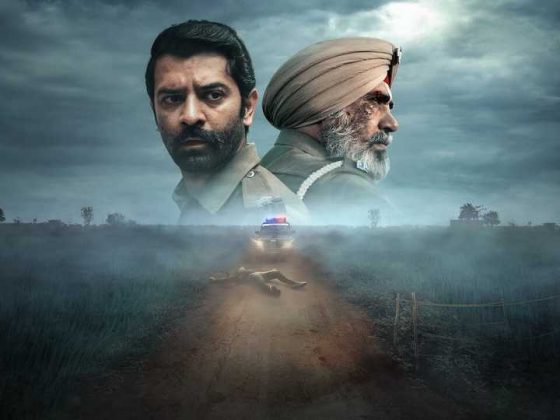Who is Dr. J Robert Oppenheimer? Why is he called ‘The Father Of The Atomic Bomb?’ How did he make the world’s first ever atomic bomb? What was ‘The Trinity Test’ and the ‘The Manhattan Project’ that led to its fruition? These are some of the questions that albeit our science textbooks never fully answered, we all have at some point had a rudimentary knowledge about.
If someone is expecting to go into Christopher Nolan’s latest expecting to watch tons of war sequences, bomb droppings and explosions (like in Nolan’s 2017 film war drama “Dunkirk”), then let me warn you at first. “Oppenheimer” is not only about the creation of the ‘world’s first atomic bomb’ and the nuclear weapons, but places the titular (and controversial) character at the front and center of this 3-hour long movie. It delves into the infamous life of the creator of the weapon that changed the course of humanity. What was J Robert Oppenheimer’s life’s significance? Based on Kai Bird and Martin J Sherwin’s book ‘American Prometheus’ – book that took 25 years to get written – the film adroitly adapts the source material while making it seem somehow more relevant and urgent.
The film uses Oppenheimer’s 1954 trial and the cross-examination it led to by ‘United Nations Atomic Energy Commission’ as its central narrative device. But alike most Nolan films, the screenplay shifts between different timelines, with each one given a different aesthetic feel. We watch incidents that took place over the span of years, preceding as well as following the terrifying incidents at Hiroshima and Nagasaki that killed claimed around 200,000 innocent lives.
We are introduced to young Robert Oppenheimer (played brilliantly by Cillian Murphy) while he completes his graduation at Europe’s most renowned institution. A brilliant young mind, Oppenheimer spent his long adolescence next to famous scientists, while casually learning Dutch and Sanskrit. His boundless realm of knowledge and keen interest in quantum physics leads him to lead ‘The Manhattan Project’ as a director. When approached by Lieutenant General Lesle Groves (played by Matt Damon), ‘Oppie’ builds a small county in Los Alamos of New Mexico, where he spends experiments behind making the atomic bomb with his fellow scientists.
Just like his previous bewildering creations like “Inception” (2010)’ and his last feature, “Tenet” (2020), “Oppenheimer” too uses similar cross cutting to jump between tense scenarios. The entire plot covers the events from Robert’s early days as a student to his controversial trials post World War II. The first is paced deftly and steadily, setting up Oppenheimer’s personal and professional world, thus introducing us to every supporting character through his point of view. We get his encounter with Lewis Strauss (played by Robert Downey Jr.), affair with communist party member Jean Tatlock (played by Florence Pugh), his complicated relationship with wife Kitty (played by Emily Blunt) and their marriage. We get an array of recognisable actors introduced, but some of them are not given much screen time to do their best. In the second half, the plot emphasizes on the proceedings of the Trinity test and its inevitable consequences.
“Oppenheimer” marks Cillian Murphy’s sixth collaboration with Nolan, and first time with him leading in the title role. The actor is most famously known for his gangster epic drama, “Peaky Blinders” and was recently seen in “The Quiet Place II” (2021). Thus, Murphy has over the years steadily created a demanding presence and gets into the role of the physicist with a piercing ease. Nolan and his cinematographer, Hoyte Van Hoytema, beautifully capture Murphy’s striking blue eyes and chiseled face in tight close-ups, showcasing his incredible versatility.
Hoyte also uses monochrome effects in the film, shot seamlessly on 70mm, especially in Strauss’s scenes to show the character’s gloomy life. This also marks the first time I have seen Robert Downey Jr. not in his usual ‘Tony Stark’ avatar. The different shades of Lewis’s characters and the striking dichotomies are well enacted by Downey Jr. Emily Blunt’s portrayal as ‘Kitty’ similarly captures the melancholia of her life. Apart from Oppenheimer, she easily remains the most complex and well laid out character in the film.
The sound design and the structure of the film elevate the thrill in crucial scenes, especially with the sense of shared trauma we as a civilization have been through. So if you don’t pay attention to the critical events, Ludwig Goransson’s operatic background score would bring them to your notice.
Overall, “Oppenheimer” remains a glorious biopic about the father of the atomic bomb despite a messy and bloated plot, works well through its slow-burn narrative. Thus, it remains a spectacular experience at the theaters this year making it a worthy watch.











